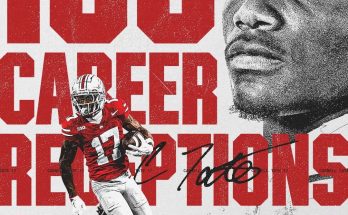After six games into the NFL season, the Denver Broncos had already amassed an astonishing total of 30 sacks, the highest in the entire league at that point. This remarkable defensive feat had not only captured the attention of fans and analysts alike but also set the stage for what could be a historic season for the team. With such a blistering pace, many began to speculate that the Broncos were on track to shatter the all-time single-season sack record—a mark that had stood unchallenged for decades. The existing record, an impressive 72 sacks in one season, was held by the legendary 1984 Chicago Bears, a team that many consider the gold standard for defensive excellence in NFL history.
The Broncos’ defense, inspired by the legacy of the Orange Crush, had earned a new nickname from fans and media alike: the Orange Rush. This moniker not only paid homage to their iconic predecessors but also symbolized the ferocity and relentlessness with which the current squad attacked opposing quarterbacks. The Orange Rush was more than just a clever play on words; it represented a rebirth of Denver’s defensive identity, a resurgence of the kind of dominance that once made the Broncos’ defense feared across the league.
To fully appreciate the significance of what the Broncos were accomplishing, it’s important to understand the history behind the Orange Crush and the broader context of defensive play in the NFL. The original Orange Crush defense was the heart and soul of the Denver Broncos during the late 1970s. Led by stalwarts such as Randy Gradishar, Tom Jackson, and Louis Wright, the 1977 Broncos team became legendary for its tenacity, discipline, and ability to stifle opposing offenses. The Orange Crush defense was instrumental in driving Denver to its first-ever Super Bowl appearance, Super Bowl XII, a milestone that forever changed the franchise’s fortunes.
Fast forward to 2025, and the Broncos had embraced that proud defensive tradition with renewed vigor. Defensive coordinator Justin Hollins had engineered a system that maximized the strengths of his players, focusing on aggressive pass rush schemes and versatile linebacker play. The results were evident on the field, where opposing quarterbacks found themselves under relentless pressure, often unable to set their feet or execute clean throws. The Broncos’ defensive line, featuring a blend of veteran savvy and youthful explosiveness, was wreaking havoc week after week.
Among the standouts was star pass rusher Bradley Chubb, whose combination of speed, strength, and technical prowess made him one of the most feared edge rushers in the league. Alongside him, younger players like Nik Bonitto were quickly emerging as dynamic disruptors, adding depth and unpredictability to the Broncos’ pass rush. The defensive front seven worked in harmony, utilizing stunts, blitzes, and well-timed zone coverages to confuse offenses and generate sacks. The coaching staff’s emphasis on film study and preparation allowed Denver’s defenders to anticipate offensive tendencies and react swiftly.
As the Broncos piled up sacks, the narrative around the team shifted from one of cautious optimism to genuine excitement about a possible record-breaking season. Breaking the 72-sack mark set by the 1984 Bears would require averaging roughly 4.5 sacks per game over the entire 17-game regular season—a daunting challenge, but one that the Broncos seemed capable of meeting. Fans packed stadiums with renewed enthusiasm, energized by the team’s defensive prowess and the tantalizing prospect of witnessing history.
Beyond the numbers, the Broncos’ defense represented a philosophy that prized teamwork, discipline, and relentless effort. Unlike offenses, which often rely on individual talent and spectacular plays, dominant defenses require coordination, communication, and selflessness. The Broncos’ players embodied these qualities, celebrating each sack as a collective achievement rather than an individual accolade. This mentality fostered a sense of unity and purpose, making the defense not only effective but also resilient in the face of adversity.
The impact of the Broncos’ defense extended beyond just sacks. Their ability to disrupt opposing quarterbacks led to turnovers, rushed throws, and missed opportunities for the offense. This, in turn, created advantageous situations for Denver’s own offense, providing better field position and momentum swings. In modern NFL football, where offenses have become increasingly potent and dynamic, having a defense capable of applying consistent pressure is invaluable. The Broncos’ Orange Rush was proving that even in an era dominated by aerial attacks and high-scoring games, defense still wins championships.
Media coverage of the Broncos’ defensive surge was widespread. Analysts compared the current Broncos squad to the great defenses of the past, often citing the ’84 Bears as the benchmark for excellence. Some pundits debated whether the NFL’s evolution—such as changes in rules favoring offenses—made it harder or easier to achieve high sack totals. Regardless, the Broncos’ achievement was undeniable. Week after week, their defense was the talk of the league, prompting opposing coaches to devise special game plans just to mitigate Denver’s pass rush.
The fans, too, embraced the Orange Rush with fervor. Stadiums roared with chants and cheers every time a sack was recorded, and social media buzzed with highlights showcasing the Broncos’ defenders in action. The players’ jerseys flew off shelves, and merchandise celebrating the defensive unit became some of the team’s top sellers. The Orange Rush was more than just a nickname—it was a cultural phenomenon, a rallying cry for the Denver faithful.
Looking ahead, the Broncos were keenly aware that maintaining this pace required not only talent but also endurance and adaptability. The grind of a full NFL season takes a toll on even the best players, and injuries or strategic adjustments by opponents could slow down their momentum. However, the coaching staff’s emphasis on depth and conditioning aimed to keep the defense fresh and ready for each challenge. Young players continued to develop, and veterans provided leadership and guidance, creating a balanced and formidable unit.
The quest to break the single-season sack record was not merely about individual or team glory; it represented the culmination of years of effort, tradition, and belief. For the Broncos, it was a chance to cement their place in NFL history alongside some of the greatest defenses ever assembled. For the players, it was an opportunity to showcase their skills on the biggest stage and contribute to something larger than themselves.
As the season progressed, every game became a chapter in this unfolding story. Each sack added to the total, bringing the Broncos closer to the record that had seemed untouchable for decades. The anticipation built with every defensive play, as fans and commentators alike watched with bated breath to see if the Orange Rush could achieve what no team had done before.
Beyond the statistics and accolades, the Broncos’ defense was a testament to the enduring power of teamwork, dedication, and strategic excellence in football. In an era where offenses often dominate headlines, the Orange Rush reminded the league and its fans that defense remains a vital, thrilling, and game-changing element of the sport.
Ultimately, whether or not the Broncos surpassed the 72-sack record, their performance had already left an indelible mark on the NFL. They rekindled a proud tradition, inspired a new generation of players and fans, and demonstrated that with the right blend of talent, preparation, and heart, history could be made on the gridiron. The Orange Rush was not just a nickname—it was a legacy in the making, a symbol of Denver’s defensive resurgence and a beacon of excellence for seasons to come.



